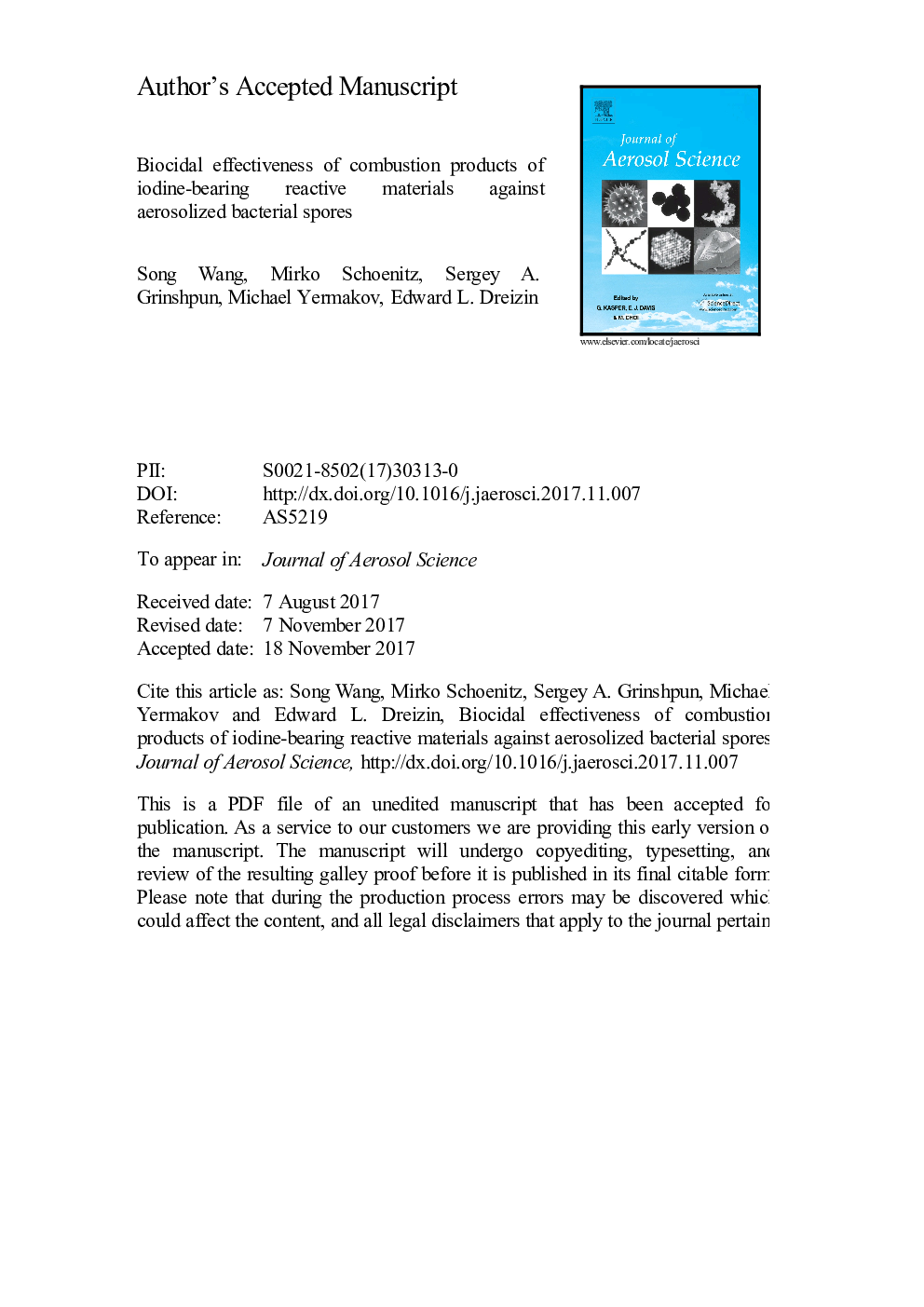| کد مقاله | کد نشریه | سال انتشار | مقاله انگلیسی | نسخه تمام متن |
|---|---|---|---|---|
| 8865318 | 1620707 | 2018 | 17 صفحه PDF | دانلود رایگان |
عنوان انگلیسی مقاله ISI
Biocidal effectiveness of combustion products of iodine-bearing reactive materials against aerosolized bacterial spores
ترجمه فارسی عنوان
اثربخشی بیولوژیکی محصولات احتراق مواد واکنش دهنده یددار بر علیه اسپورهای باکتری اسپری
دانلود مقاله + سفارش ترجمه
دانلود مقاله ISI انگلیسی
رایگان برای ایرانیان
کلمات کلیدی
آلیزهای بیولوژیکی، شکست عامل مواد فعال
موضوعات مرتبط
مهندسی و علوم پایه
علوم زمین و سیارات
علم هواشناسی
چکیده انگلیسی
Mechanochemically prepared metal-based iodine bearing reactive materials (RMs), generate I2 gas among other combustion products, and are therefore of interest as biocidal additives in agent defeat applications. In order to facilitate future use of these RMs, a phenomenological model is proposed that describes biocidal effectiveness of ternary Al·B·I2 composites against aerosolized spores of Bacillus thuringiensis (Btk), a Bacillus anthracis surrogate. The model is based on experiments, in which aerosolized spores passed through an enclosed flow system, where on a sub-second time scale they were exposed to elevated temperatures and combustion products of different RM powders injected in an air-acetylene flame. Temperature distribution, and flow conditions in the exposure chamber were varied to achieve different temperature, iodine concentration profiles, and exposure times. The exposure effect was quantified experimentally via an inactivation factor IF, defined as the inverse fraction of microorganisms surviving the exposure. The process observed in the experiments was described using computational fluid dynamics (CFD) modeling, treating the bacterial spores as 1-µm unit-density particles injected in the airflow, and assuming continuous iodine release during RM particle combustion. To quantify the biocidal effect for each spore, an integral exposure function was introduced consisting of two Arrhenius terms corresponding to pure thermal and iodine-related inactivation. The corresponding activation energies were found as E1 = 5 kJ/mol, and E2 = 10 kJ/mol, respectively. The rate constant for the iodine-concentration dependent term was found as 32.3 m3/mol multiplied by the iodine concentration in mol/m3. A critical total exposure threshold was identified. Since the model proposed here depends only on thermal exposure and on iodine, it may be valid for a wider range of iodine bearing RMs.
ناشر
Database: Elsevier - ScienceDirect (ساینس دایرکت)
Journal: Journal of Aerosol Science - Volume 116, February 2018, Pages 106-115
Journal: Journal of Aerosol Science - Volume 116, February 2018, Pages 106-115
نویسندگان
Song Wang, Mirko Schoenitz, Sergey A. Grinshpun, Michael Yermakov, Edward L. Dreizin,
